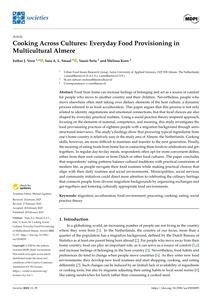In the 1940s, Iran experienced dramatic changes in urban form, as worldwide modernization movements were embodied in new ‘modern’ neighborhood units in Tehran. Proposals for these neighborhoods, like those in other countries, not only included new housing typologies, but also aimed to alter existing social structures and facilitate nation building. Discussions and proposals regarding new neighborhoods centered on creating healthy, suitable, low-cost housing for new government employees – a group emblematic of Iran's newly established, modern middle class. However, the traditional lifestyle was an undeniable fact of society. Facing the modern socio-urban policies and socially traditional way of living led to both cultural change and landscape transformation. This paper discusses: how do regional architectural traditions transform the global modernity? How are Western conventions of how to be modern transformed by regional tradition and a different lifestyle? How does the institutionalization of modern neighborhoods, based on the lifestyles of its people, create an indigenous modernity? This paper illustrates how urban and social reformation practices towards modernization in the early twentieth century were embodied by Tehran's first modern neighborhood, Chaharsad Dastgah, as well as how domestic Iranian lifestyles influenced this neighborhood and distinguished it from its contemporaries.
LINK
This essay investigates the Iranian encounter with and influence on the international modernist movement. The reception of international modernist discourses and their weaving into Iranian housing- and city-building practices contributed to the formation of a peculiar, alternative, and indigenous version of modernism that took hold in the 1950s. While such practices were clearly part of the international modern movement, they were simultaneously definable as uniquely Iranian. By analyzing the Narmak quarter in Tehran, this paper explores how the production of a middle-class neighborhood became part of a nation-building strategy. Through processes of moderation and appropriation, the idealistic modernist version was made more practical based on pre-existing socio-cultural characteristics and typological elements. Ultimately, this local version of modernism led to the acceptance of modernism, provoked an urban reaction and produced some unexpected social consequences.
LINK
Food from home can increase feelings of belonging and act as a source of comfortfor people who move to another country and their children. Nevertheless, people whomove elsewhere often start taking over dietary elements of the host culture, a dynamicprocess referred to as food acculturation. This paper argues that this process is not only related to identity negotiations and emotional connections, but that food choices are also shaped by everyday practical realities. Using a social practice theory-inspired approach, focusing on the elements of material, competence, and meaning, this study investigates the food provisioning practices of eighteen people with a migration background through semistructured interviews.Keywords: migration; acculturation; food environment; procuring; cooking; eating; social practice theory
DOCUMENT

The European Manifesto for Inclusive Learning is an initiative of the University of Florence to promote adult education for migrants and refugees. The program seeks to provide “a concrete tool for adult educators to promote adult learning in their local context”. In order to achieve this goal, eight European Union partners in different EU countries collaborated intensively for 1 ½ year to exchange experiences, expand opportunities and to seek to promote a more coordinated and integrated approach. Each partner collected case studies of good practices using a common tool for collecting data. The results of the Dutch partner, The Hague University of Applied Sciences are presented here. Seven cases have been studied with very different, mainly informal ways of mutual learning in the Netherlands. First the Manifesto is described in more detail. This is followed by a sketch of refugee flows to the Netherlands and the Dutch asylum system. After these chapters, the different cases are presented, followed by a conclusion and recommendations based on the Dutch good practices.
DOCUMENT
